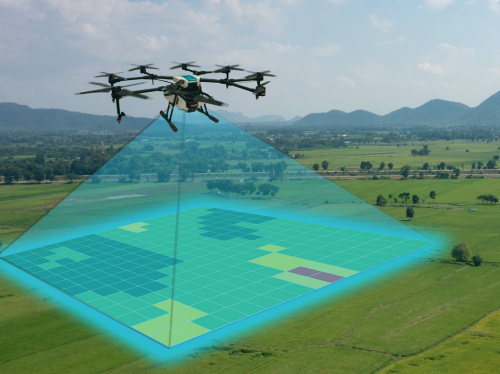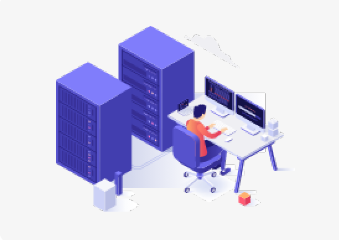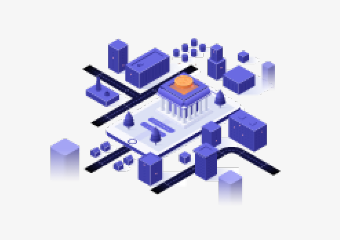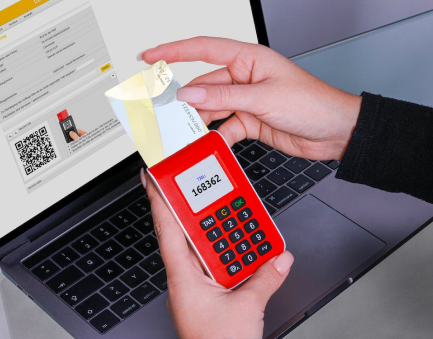
How Drones Are Growing the Agricultural Industry with Soil Analysis
The agricultural industry has come a long way from traditional farming practices. With the advent of technology, farmers are now able to harness the power of drones for soil analysis. This innovative approach is transforming agriculture as we know it, providing accurate data and insights that help optimize crop growth and increase yield.
Soil Analysis
Soil analysis in agriculture is a process of assessing the chemical, physical, and biological properties of soil. The analysis provides valuable information about the fertility and health of the soil, which is important for successful crop production.
Soil analysis typically involves collecting soil samples from different locations within a field or farm and sending them to a laboratory for testing. The tests may include measuring the levels of nutrients such as nitrogen, phosphorus, and potassium, as well as assessing soil pH, organic matter content, and texture.
The results of the soil analysis help farmers and agronomists make informed decisions about soil management practices such as fertilization, liming, and tillage. By identifying specific soil nutrient deficiencies, farmers can tailor their fertilizer applications to ensure optimal plant growth and yield. The information obtained from soil analysis can also be used to develop long-term soil management plans to improve soil health and fertility, which can lead to sustainable agricultural practices.
Manual Soil Analysis vs Drone Analysis
When it comes to analyzing soil in agriculture, there are two main methods: manual and drone analysis. Manual soil analysis is a traditional method that has been used for decades. It involves collecting soil samples from different parts of the field and sending them to laboratories where they are tested for nutrient levels, pH balance, organic matter content, and other factors.
On the other hand, drone analysis uses unmanned aerial vehicles (UAVs) equipped with sensors that can capture data on different aspects of soils such as moisture level, temperature variations over time, or even crop health status. This technology allows farmers to gather a large amount of accurate data quickly without disturbing the crops or spending too much time doing manual work.
While both methods have their advantages and drawbacks, using drones for soil analysis offers several benefits over traditional manual testing techniques. For instance, drones can cover larger areas in less time compared to human labor while also providing more comprehensive results through advanced sensor technologies like multi-spectral cameras which detect various wavelengths reflected by plants indicating health status.
However, some argue that drone technology may not be suitable for all types of terrain conditions especially those with complex topography which could affect the quality of images captured by UAVs during flight operations. Additionally cost could be another factor limiting widespread adoption since this technology requires significant investment upfront before reaping any benefit from its use in agricultural settings.
In summary, choosing between manual and drone-based soil analyses depends largely on what you want to achieve as well as your budget constraints among other factors like terrain type or weather conditions at play during farming season hence making either approach appealing depending on your specific needs
The Benefits of Using Drones for Soil Analysis
Using drones for soil analysis in agriculture has several benefits that have revolutionized the industry. Firstly, drones can collect data over a large area of land quickly and cost-effectively. This means farmers can make decisions based on accurate information about their crops, which saves time and resources.
Secondly, using drone technology for soil analysis allows farmers to identify problem areas or potential threats to crop yields. By analyzing the data, they can determine if certain areas require additional fertilization or irrigation, which helps them optimize yield and minimize waste.
Thirdly, drone technology is non-invasive when it comes to collecting samples from sensitive environments like wetlands or forests. Because drones fly above these areas without touching the ground or disturbing plants and wildlife below, there is no damage done to habitats during sample collection.
Using drones for soil analysis reduces labor costs significantly since fewer people are needed in the field. This means farmers have more time available to focus on other important aspects of their operations like managing crop health and optimizing production output while reducing manual labor expenses.
Drone technology has made significant strides in helping farmers improve their agricultural practices through efficient data collection methods with minimal environmental impact at lower operating costs than traditional methods.
The Drawbacks of Using Drones for Soil Analysis
Despite the benefits that drones bring to agriculture, there are drawbacks to using them for soil analysis. One of the main concerns is their cost. Drones can be an expensive investment for farmers who may not have the funds to purchase and maintain them regularly.
Additionally, drones require skilled operators who can handle a complex piece of machinery. Without proper training or experience, there is a risk of accidents occurring during flights which could result in damage to crops or injuries to individuals nearby.
Another drawback is the potential for inaccuracies in data collection. While drone technology has advanced significantly over recent years, they still rely on sensors and cameras that may not always provide accurate readings due to factors such as weather conditions or technical issues with equipment.
Privacy concerns must also be taken into account when using drones for soil analysis in agriculture. Farmers must ensure that they are complying with regulations regarding data protection and monitoring activities conducted over private land.
While there are several advantages offered by using drones within agriculture including improved efficiency and effectiveness of operations – it’s important we consider these drawbacks too before investing heavily in this technology.
The Future of Drones in Agriculture
The future of drones in agriculture looks very promising. We can expect to see more advanced and sophisticated technologies being used by farmers to analyze soil samples, survey fields, spray crops with pesticides or fertilizers, and even plant seeds.
One of the most exciting prospects for drone technology in agriculture is the use of autonomous drones equipped with artificial intelligence (AI) algorithms. These drones will be able to scan entire farms without human intervention and collect data on things like crop quality, soil health, weather patterns, and pest infestations.
Another area where we can expect to see significant growth in drone usage is precision farming. By using high-resolution cameras and sensors mounted on drones, farmers will be able to identify specific areas within their fields that require attention. This targeted approach means that resources such as water, fertilizer or pesticides can be applied only where they are needed.
The integration of drone technology with other emerging agricultural tech tools such as blockchain-based systems could revolutionize how food is grown and distributed globally. The ability to secure sharing of data around food origin and quality could increase transparency across the supply chain while also reducing waste.
It’s clear that drones hold enormous potential for transforming agriculture by increasing efficiency levels while also helping us address some critical issues related to sustainability and food security. As these technologies continue evolving rapidly over time so too must our understanding of what new challenges they may bring along with them into our society!
Conclusion
The marriage between drones and soil analysis proves to be a game-changing innovation for the agricultural industry. The use of drone technology in agriculture has made it possible to analyze large areas of land quickly and accurately, resulting in improved crop yields and reduced costs for farmers. Although there are challenges associated with using drones for soil analysis such as high initial investment cost and technical limitations, these can be overcome through continued development of new technologies.
As we move into the future, we can expect more advancements in agritech that will further revolutionize farming practices. Drones are just one example of how technology is changing agriculture for the better. By embracing changes like this one, we can make our food production processes more efficient, sustainable and ultimately feed a growing population.

















